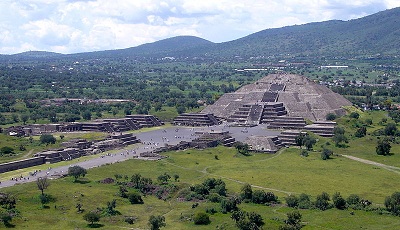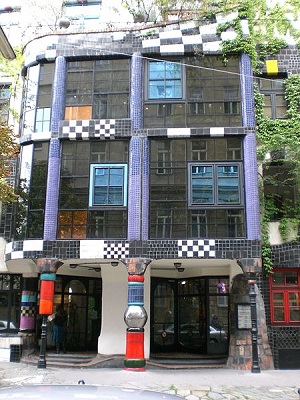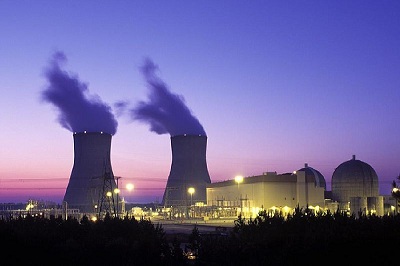Art, Infrastructure, and Inspiration
I recently had the good fortune to visit Vogtle nuclear power plant, in Georgia, to see the ongoing construction of Units 3 and 4. The only comparable experience I've had was the first time I saw the Pyramid of the Moon at Teotihuacan, Mexico. It made me think long and hard about how much planning, cooperation, and hard work we humans are capable of doing. You can't build a pyramid, or a cooling tower for that matter, without a lot of help.
This experience also got me thinking about the role of collaboration and cooperation in cultivating public interest and innovation. There are plenty of past examples, from Michelangelo's ceiling at the Sistine Chapel to the more contemporary Kunst Haus Wien in Vienna. Architecture and infrastructure have a long history of being created with the input of artists to ensure a finished product that is both functional and beautiful.
These spaces ultimately become places of inspiration for generations to come.
When I visited the Kunst Haus Wien as a child, I left with the understanding not that I was going to become an artist, but that I already was an artist. On some level I think that we are all artists (and scientists for that matter, but that's a whole other post). Humans love things to be beautiful, interesting, and symmetrical. We see beauty in each other, in the clouds and in outer space. Aesthetics are an important part of the human experience, and as a species we have a long history of actively making the spaces we inhabit more beautiful.
The act of making a space beautiful is a way to communicate that it is somehow important. Aqueducts and bridges are good examples of critical infrastructure that historically have also been considered works of art. When I looked up at the giant containment vessel heads at Vogtle, however, it struck me that the need for humans to feel connected to this technology is not just about beauty, it's also about prosperity.
We live in an age in which we are simultaneously more connected, and less connected, than any other time in history. I don't think the "more connected" part takes much explanation; the Internet and subsequent technologies allow (perhaps even pressure) us to be constantly in contact with our "networks."
It seems, however, that in our technologically-charged lives it's easier than ever to assume that food comes from the grocery store and that electricity comes from a socket. As the world's population booms and our career paths become increasingly specialized, it is easy to never have to think about where things come from.
The ease of use of our modern tools often means that the only time we think about where something really comes from is when we momentarily lose access to it (or the price sky rockets). I think this is why many green groups idealize "simpler times", when people were (theoretically) more connected to and responsible for their consumption. They assume that people are only able to appreciate what they have when it's very limited. I tend to disagree with the hypothesis that scarcity brings out the best in people-in fact, I think that it does quite the opposite.
I am all for being more responsible for our personal consumption, but I reject that the path to forging that connection is through having less. Robert Hargraves' well-known presentation "Aim High" explains why having access to abundant electricity is one of the most important factors in living a prosperous, healthy life.
It is tempting to take a stance similar to green groups and think, "people will finally appreciate nuclear when natural gas prices rise," but instead of leaning on fear of scarcity I think I will aim for prosperity and say that, "I'd really like to inspire people to appreciate what nuclear energy does for us now, every day."
Art is my favorite way to inspire, but I would love to hear about other ways that readers are inspiring their communities. I recently learned about some really wonderful community outreach organized by the Savannah River ANS section-be sure to check out the "Interactive Nucleus Exhibit" at the above link.
Please let me know in the comments what inspired you to become a nuclear professional, and/or what you are doing to inspire others.
____________________________

Hobbs Baker
Suzy Hobbs Baker is the executive director of PopAtomic Studios, a nonprofit organization that conducts educational outreach through the Nuclear Literacy Project. Baker is an ANS member and a frequent contributor to ANS Nuclear Cafe.




